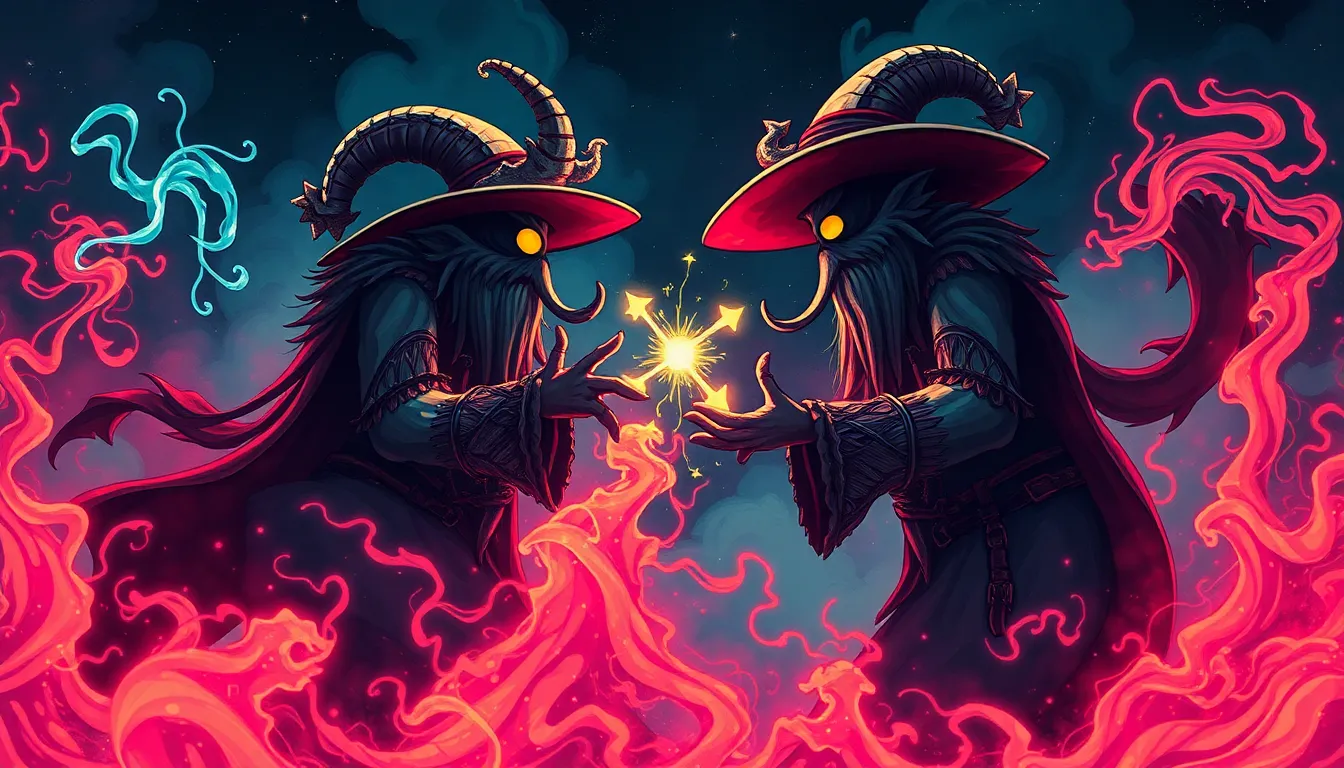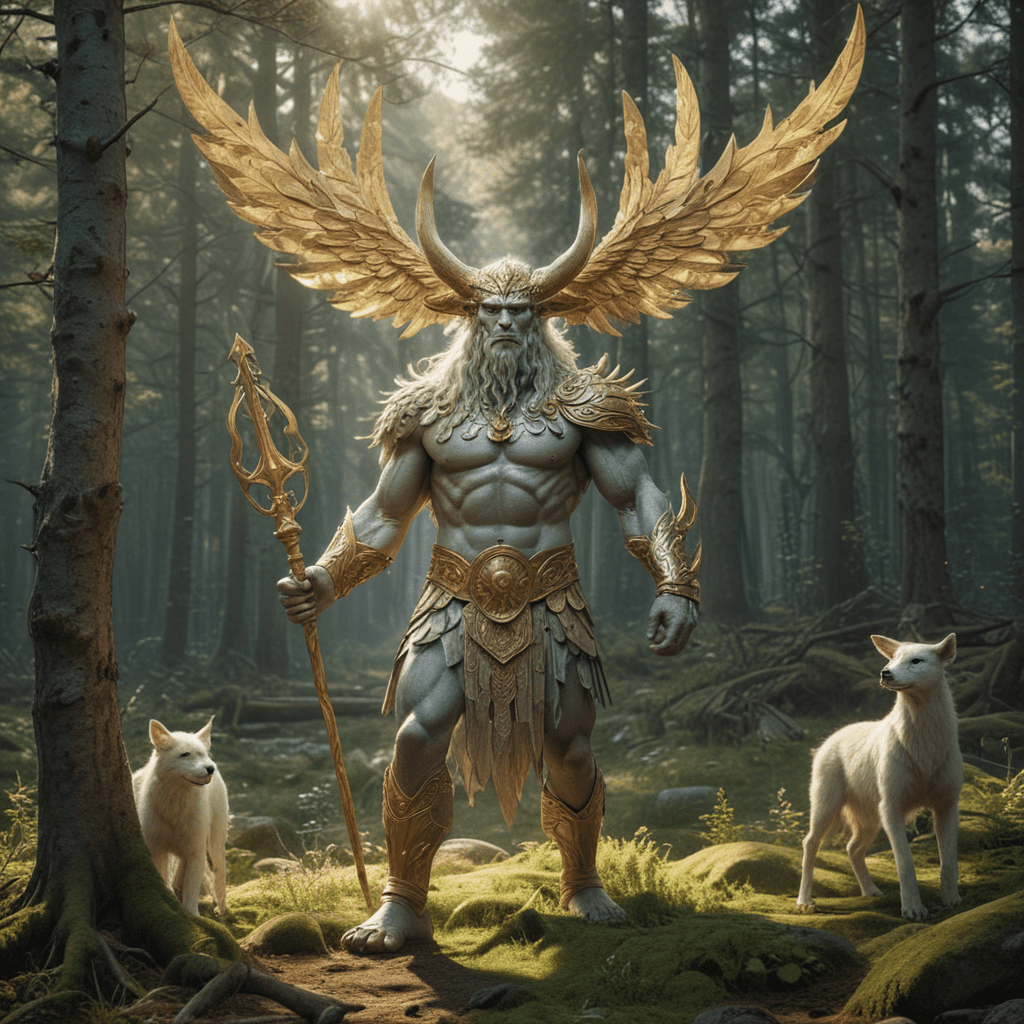How Tricksters Teach Us About Morality and Ethics
I. Introduction
In the vast tapestry of mythology and folklore, tricksters hold a unique place. Defined as characters who use cunning, deception, and wit to navigate challenges, tricksters often embody the complexity of moral and ethical dilemmas. They intrigue us not only with their playful antics but also with the profound lessons they impart about human nature and societal norms.
Across various cultures, trickster archetypes emerge, each with distinct traits and narratives. From the mischievous Loki of Norse mythology to the clever Anansi of West African folklore, these characters serve as mirrors reflecting the values, fears, and aspirations of their societies. Studying tricksters can provide valuable insights into how cultures understand morality and ethics, revealing the intricate balance between order and chaos.
II. The Nature of Trickster Characters
Tricksters are defined by a set of characteristics that make them both engaging and complex. They are often:
- Cunning: Using their intelligence to outsmart opponents.
- Witty: Employing humor to diffuse tense situations or to critique societal norms.
- Playful: Approaching life with a sense of fun, often disregarding serious consequences.
Despite their often humorous demeanor, tricksters possess a duality that can blur the lines between hero and villain. They might be seen as:
- Heroes when they challenge oppressive systems.
- Villains when they engage in selfish or destructive behavior.
Notable examples of trickster figures include:
- Loki: The Norse god known for his trickery and chaotic nature, often straddling the line between ally and adversary.
- Anansi: A spider figure in West African folklore who uses his intelligence to outwit stronger opponents.
- Coyote: A key figure in Native American stories, emblematic of both wisdom and folly.
III. Tricksters as Moral Educators
Tricksters play a crucial role in imparting moral lessons through humor and satire. Their narratives often serve as cautionary tales, highlighting the consequences of unethical behavior. For instance, a story may depict a trickster who steals from others, only to face dire repercussions, thereby teaching audiences about the value of honesty.
Additionally, trickster tales frequently delve into moral ambiguities, challenging the black-and-white nature of ethics. They invite audiences to question:
- What is right and wrong?
- How do intentions affect the morality of actions?
IV. Cultural Perspectives on Tricksters
Tricksters are not merely isolated figures; they are deeply embedded in cultural narratives. Their significance varies across cultures, offering diverse perspectives on morality:
A. Indigenous Perspectives on Tricksters in Native American Traditions
In Native American cultures, tricksters like Coyote or Raven are often seen as creators who bring both chaos and order. They are agents of change, teaching lessons about resilience, adaptability, and the importance of community.
B. African Folklore and the Wisdom of Anansi
Anansi the Spider is a beloved figure in African folklore, representing the cleverness and resourcefulness of the African people. His tales often emphasize the importance of intelligence over brute strength, thus conveying moral teachings that resonate with the community’s values.
C. European Tricksters: From Folktales to Modern Literature
In Europe, tricksters like Reynard the Fox and Puck from Shakespeare’s “A Midsummer Night’s Dream” embody the spirit of mischief while also critiquing societal norms. Their stories remind us that the line between right and wrong is often blurred.
V. Tricksters and the Concept of Justice
Tricksters challenge established authority and social norms, often subverting the status quo. They expose the flaws within systems that are meant to uphold justice, highlighting the imbalance that can exist in societal structures.
The balance of chaos and order is central to trickster tales. These narratives often illustrate:
- The necessity of questioning authority.
- The potential for change through disruption.
Tricksters act as catalysts for social change, prompting audiences to reflect on their values and the justice within their societies.
VI. Ethical Dilemmas Presented by Tricksters
Trickster narratives frequently present ethical dilemmas, encouraging audiences to explore situational ethics. These characters often find themselves in conflicts that test their morals:
A. Exploring Situational Ethics Through Trickster Actions
Tricksters navigate complex situations where the right choice is not always clear. Their actions prompt us to consider:
- Is deception ever justified?
- How do personal goals conflict with collective morality?
B. The Conflict Between Personal Goals and Collective Morality
Trickster stories often depict characters pursuing their desires at the expense of societal norms, raising questions about individualism versus community ethics.
C. Trickster Tales that Illuminate Ethical Grey Areas
Many trickster tales challenge readers to embrace ambiguity, suggesting that morality is often a matter of perspective.
VII. Psychological Insights: Tricksters and Human Nature
Tricksters serve as reflections of the human psyche, embodying our inner conflicts, desires, and fears. They remind us of the complexity of human nature, including our capacity for:
- Deception: Understanding how and why we deceive others.
- Relatability: The appeal of tricksters lies in their flaws, making them relatable figures.
VIII. Modern Interpretations of Tricksters
In contemporary media, tricksters continue to thrive, adapting to new contexts while retaining their core attributes. They appear in:
- Film: Characters like the Joker in Batman epitomize the trickster archetype.
- Literature: Modern novels often draw on trickster themes to explore societal issues.
- Art: Trickster motifs are prevalent in visual arts, symbolizing rebellion against norms.
The evolution of these archetypes in the digital age allows for new interpretations and discussions about ethics in a rapidly changing world.
IX. Lessons from Trickster Tales
Trickster narratives impart key lessons on morality and ethics, emphasizing:
- The value of questioning authority and societal norms.
- The importance of critical thinking and self-reflection.
- The complexity of ethical decisions in everyday life.
The lasting impact of tricksters on cultural morality is profound, encouraging audiences to embrace ambiguity and consider multiple perspectives. Ultimately, tricksters teach us that morality is not a fixed set of rules but a dynamic interplay of choices and consequences, inviting us to reflect on our own lives and values.



